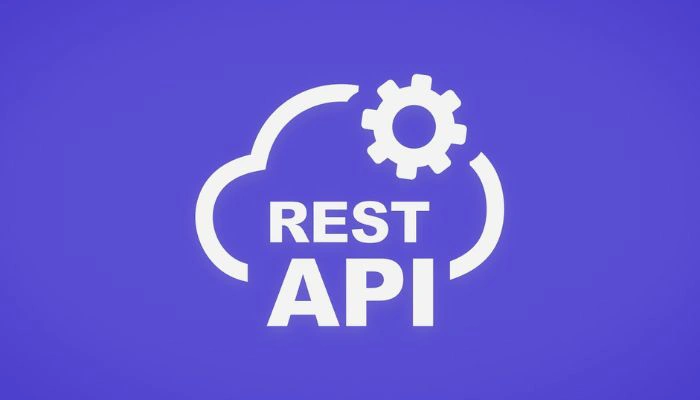REST API Best Practices, Concepts, Structure, and Benefits
In the intricate world of modern software development, where applications and services need to communicate seamlessly, Application Programming Interfaces (APIs) have emerged as the crucial connective tissue. They are the contracts that allow different software systems to talk to each other, regardless of the underlying technologies or programming languages. While various architectural styles for designing APIs exist, one has become the de facto standard for building web services: the REST API. Its simplicity, scalability, and adherence to web standards have made it the backbone of the internet, powering everything from social media feeds to e-commerce platforms and mobile applications.
This comprehensive guide will demystify the REST API, exploring its core concepts, architectural constraints, and the immense benefits it offers. We will delve into what makes a RESTful service "RESTful" and examine the essential components of its structure. Whether you are a developer looking to design your next web service, a student trying to understand this fundamental concept, or a business owner seeking to leverage the power of interconnected systems, this article will provide you with a solid foundation.
As you read on, you will gain a clear understanding of the principles that govern a well-designed REST API, learn about the best practices that ensure its efficiency and reliability, and discover how this architectural style can significantly enhance your software development projects.
What is a REST API and How Does It Work?
To truly grasp the power of a REST API, we must first understand its foundational principles. The term "REST" stands for Representational State Transfer, an architectural style created by Roy Fielding in his 2000 Ph.D. dissertation. It is not a protocol or a standard in the traditional sense, but rather a set of guidelines and constraints for building a distributed system. The core idea is to treat everything as a "resource," which is an object with a type, data, and a set of methods that can be performed on it. Each resource is identified by a unique Uniform Resource Identifier (URI).

A RESTful API uses the standard HTTP protocol to perform operations on these resources. This client-server architecture is stateless, meaning each request from the client to the server contains all the information needed to understand and process the request. The server does not store any information about previous requests. This statelessness is a key factor in a REST API's scalability, as it allows for horizontal scaling and prevents server overload from session data.
The communication model is straightforward: a client sends an HTTP request to a specific resource URI, and the server returns a response. The representation of the resource can be in various formats, such as JSON, XML, or even plain text, with JSON being the most common due to its lightweight and human-readable nature. This simple, uniform interface is a cornerstone of REST, allowing for loose coupling between the client and the server, enabling them to evolve independently.
The Six Key Architectural Constraints of a REST API

To be considered a true RESTful API, a service must adhere to six specific architectural constraints. Understanding these constraints is vital for anyone looking to design or work with a RESTful system.
1. Client-Server Architecture: The client and server are separate, independent components. This separation of concerns allows each to evolve on its own, without affecting the other, as long as the API contract remains intact. The client is concerned with the user interface and user experience, while the server handles data storage and logic.
2. Statelessness: As mentioned earlier, each request from a client to a server must contain all the information necessary to fulfill the request. The server does not store any session state. This makes the system more reliable and scalable.
3. Cacheability: Responses from the server must be defined as either cacheable or non-cacheable. This allows clients to cache responses to prevent repeated requests, reducing network traffic and improving performance for the user.
4. Uniform Interface: This is the most crucial constraint. It simplifies and decouples the architecture, allowing each part to evolve independently. It includes four sub-constraints:
- Identification of resources: Resources are uniquely identified by URIs.
- Manipulation of resources through representations: A client can change a resource's state by manipulating its representation.
- Self-descriptive messages: Each message contains enough information to describe how to process the message.
Hypermedia as the Engine of Application State (HATEOAS): This is an optional but powerful constraint where resource representations include links to other related resources, guiding the client through the API.
5. Layered System: The architecture allows for multiple layers between the client and the server, such as proxies, load balancers, or security layers. The client only needs to interact with the layer it is connected to, without needing to know about the other layers.
6. Code on Demand (Optional): This constraint allows the server to temporarily extend or customize the client's functionality by transferring executable code, such as JavaScript.
Best Practices for Designing a Robust REST API
Designing a good REST API goes beyond simply following the architectural constraints. It requires a thoughtful approach to structure, naming conventions, and error handling to ensure it is intuitive, consistent, and easy for other developers to use.
Use Nouns for Resource Naming: Endpoints should represent resources, which are nouns. For example, instead of /get-users, use /users. The HTTP method itself indicates the action being performed.
Use Plural Nouns for Collections: A common and widely accepted practice is to use plural nouns for collections of resources. For example, /users to refer to all users, and /users/{id} to refer to a single user.
Use HTTP Methods Correctly: The HTTP verbs are not arbitrary; they have specific meanings that should be adhered to. This aligns with the "uniform interface" constraint.
- GET: Retrieves a resource. This operation should be safe (read-only) and idempotent (multiple identical requests have the same effect).
- POST: Creates a new resource. This operation is neither safe nor idempotent.
- PUT: Replaces an existing resource or creates one if it doesn't exist. This is an idempotent operation.
- DELETE: Deletes a resource. This is also an idempotent operation.
- PATCH: Applies a partial update to a resource. This is not idempotent.
Use Appropriate HTTP Status Codes: Status codes are a critical part of communication. They tell the client the result of their request and what to do next. A well-designed API uses these codes to provide clear feedback.
| Code | Status | Description |
| 200 | OK | The request was successful |
| 201 | Created | The request was successful, and a new resource was created |
| 204 | No Content | The request was successful, but there is no response body. Often used for DELETE requests. |
| 400 | Bad Request | The server could not understand the request due to a client error |
| 401 | Unauthorized | Authentication is required and has failed or has not yet been provided |
| 403 | Forbidden | The authenticated client does not have permission to access the resource |
| 404 | Not Found | The requested resource could not be found |
| 500 | Internal Server Error | A generic server-side error occurred |
Provide Clear and Useful Error Messages: In addition to status codes, the response body for an error should contain a clear, descriptive message about what went wrong. This helps developers debug issues quickly.
Implement Filtering, Sorting, and Pagination: For large datasets, returning all resources in a single request is inefficient. A good API allows clients to use query parameters for filtering (/users?status=active), sorting (/users?sort_by=name), and pagination (/users?page=2&limit=20).
What Are the Benefits of Using RESTful APIs?
The widespread adoption of REST APIs is a testament to the significant advantages they offer. From a technical and business perspective, the benefits are clear.
- Simplicity and Ease of Use: REST is based on standard web technologies like HTTP and URIs, making it easy to learn, understand, and use. Developers can get started quickly with minimal setup, using familiar tools and libraries. This reduces development time and cost.
- Scalability: The stateless nature of a REST API means the server doesn't need to hold onto client-specific information between requests. This allows for massive horizontal scaling. You can add more servers to handle increased traffic without complex session management, making it an ideal choice for high-traffic applications.
- Flexibility and Portability: REST is not tied to any specific programming language or technology. A client can be built in Python, a server in Java, and they can communicate effortlessly. The use of standard formats like JSON also ensures data can be easily consumed by different platforms, from web browsers to mobile devices and IoT sensors.
- Improved Performance: By leveraging caching, REST APIs can significantly improve performance. The client can store responses from previous requests and use them for subsequent ones, reducing the need for constant server communication and minimizing latency.
- Independence: The clear separation between the client and the server allows for independent development and updates. Front-end developers can work on the user interface while back-end developers build and optimize the API, without stepping on each other's toes. This agile approach accelerates the development lifecycle.
Securing Your REST API: Essential Measures
While the principles of REST provide a solid foundation, ensuring the security of your API is paramount. A security lapse can lead to data breaches, unauthorized access, and loss of trust. Here are some critical security measures for your REST API:
Use HTTPS/SSL for all communications: Encrypting all data transmitted between the client and the server is the first and most important step. This prevents man-in-the-middle attacks where sensitive information, like login credentials, could be intercepted.
Implement Authentication and Authorization:
- Authentication: Verify the identity of the client making the request. Common methods include API keys, Basic Auth, or OAuth 2.0.
- Authorization: Once a client is authenticated, determine if they have permission to access a specific resource or perform a particular action.
Validate All Inputs: Never trust data coming from the client. Validate and sanitize all user inputs to prevent common security vulnerabilities like SQL injection and cross-site scripting (XSS) attacks.
Rate Limiting: Protect your API from abuse and denial-of-service (DoS) attacks by implementing a rate-limiting mechanism. This restricts the number of requests a client can make within a specified time frame.
Use Secure Headers: Utilize HTTP security headers to protect against common web vulnerabilities. Examples include Content-Security-Policy, X-Content-Type-Options, and Strict-Transport-Security.
Error Handling Without Leaking Information: While descriptive error messages are helpful, they should never reveal sensitive server or system information. For example, don't show internal file paths, database errors, or stack traces in a production environment.
Conclusion
The REST API is more than just a buzzword; it's a foundational architectural style that has shaped the modern web. By adhering to its core concepts and best practices, developers can build systems that are not only powerful and efficient but also scalable, flexible, and easy to maintain. From the simplicity of its stateless client-server model to the robustness of its uniform interface, the principles of REST have proven to be the ideal blueprint for creating the interconnected applications that power our digital world.
Ready to build your own robust and scalable web services? Explore our full suite of API development services today and turn your vision into a reality.









